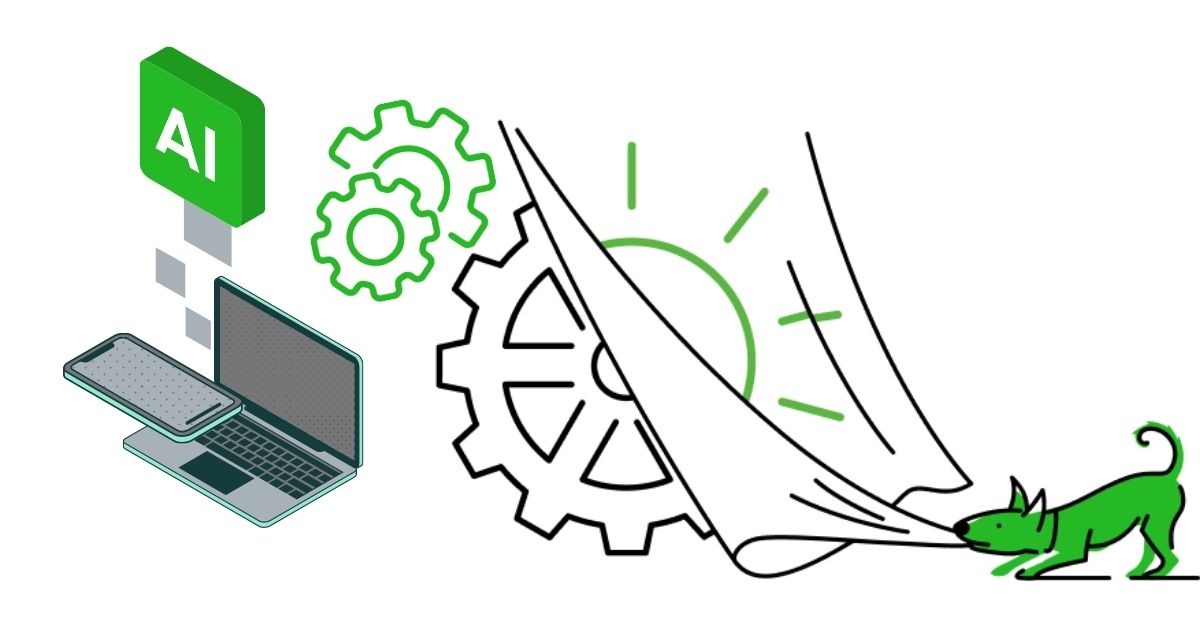Life insurance is a complex topic. Besides the many products available, underwriting is a virtual black box. You provide lots of deeply personal information during the application process but have no idea how it’s actually being used. Even the most experienced agents don’t fully understand how companies underwrite applicants.
Machine learning in life insurance will add expert knowledge from experienced financial advisors and insurance agents to the digital platform, providing a personalized recommendation to everyday customers.
Dipali Trivedi, CTO Everyday Life
Artificial intelligence (AI) has improved decision-making for companies and consumers, but it doesn’t take it far enough. That’s where machine learning comes in — and Everyday Life Insurance is at the forefront of its adoption.
We’re matching consumers to the right insurance product and coverage levels using Predictive Protection™, our proprietary technology that’s powered by machine learning. It takes the guesswork out of buying life insurance for everyday consumers.
Table of Contents
What is Machine Learning?
Machine learning is a combination of AI and computer science. It relies on built-in algorithms to learn from and adapt to new data without human assistance. It can be broken down into two categories:
- Supervised machine learning uses labeled examples to learn from and predict values.
- Unsupervised machine learning does not require labeled data but rather uses algorithms to find patterns within the data.
The process enables machine learning systems to adjust when they encounter new information automatically.
In life insurance underwriting, machine learning is used to analyze large volumes of unstructured data and identify patterns for evaluation. It can process vast amounts of information, enabling insurers to offer consumers better rates based on individual risk profiles.
Our Chief Technology Officer, Dipali Trivedi, has decades-long experience building intelligent systems using AI and machine learning. She’s using valuable data we gathered over the last two years to implement supervised learning models. The result is improved quote quality and carrier matching to optimize placement rate and affordability for our middle-income customers.
The Barriers in Life Insurance Underwriting
Insurance carriers are balancing customer experience with the complexity of underwriting. As consumers balk at the idea and hassle of taking a medical exam, insurers are on a quest to modernize underwriting and replace medical exams with AI and “big data.”
But one unintended consequence is that it’s making approval more difficult for mass-market consumers — a segment that has already seen a 25% decline in life insurance policy ownership over the past ten years, according to the LIMRA 2020 Insurance Barometer Study.
Especially problematic is the increased importance of credit reports in underwriting. Thirty-one percent of Americans have poor or bad credit, according to Experian. But that doesn’t count the 45-million Americans who don’t have a credit score at all, making purchasing life insurance even harder for the mass market.
Everyday Life Insurance is correcting this problem. Our machine learning methods are built into our Predictive Protection™ technology, which increases life insurance approval rates and get more middle-income families the financial stability they need.
Machine Learning in Life Insurance Increases Applicant Approval Rates
The coronavirus pandemic has reminded everyone of mortality in a new way. Demand for life issuance is at an all-time high, yet middle-income consumers are primarily contacted by direct marketing and not human life insurance agents. Based on our experience, fewer than one-third of applicants end up getting covered.
Common denial reasons include chronic illness, lifestyle choices, age and lying or withholding information. But the real problem is that applicants aren’t being matched with the right policies. At Everyday Life, we’re evaluating an individual’s risk profile to better match them with the right policies and increase applicant approval rates.
It’s common knowledge that each carrier can weigh risk factors differently. While one insurer may deny an applicant for a diabetes diagnosis, another may approve the application (but charge a higher rate).
One benefit of working with an insurance agent is their experience in which insurers are more likely to approve certain conditions. But even the best, most seasoned agents may only have a vague idea based on experience — they don’t really know how companies underwrite people.
That’s because underwriting is a complex process involving actuarial tables, rule-based formulas and rules of thumb. It’s a kind of “black box.”
Everyday Life’s machine learning engine can predict the chance of approval in advance. Machine learning powers our Predictive ProtectionTM that’s built into our core recommendation engine, The Ultimate Life Insurance Calculator, to increase the approval rates by recommending the right insurance product, allowing consumers to build their financial security.
Predictive ProtectionTM Matches Applicants with the Right Policy
Predictive Protection’s machine learning can learn from historical data to optimize affordability and probability of approval by the carrier. As risk factors change for various segments of the population, machine learning will learn to understand underlying risk better. In the end, it provides more accurate quotes and optimal products through more personalized recommendations for that every day customer.
Identifying the Right Product
Most consumers need life insurance policies to secure their family’s financial future. Some may need a traditional policy that lasts 20 or 30 years, while others are ideal candidates for accidental death protection or final expense insurance.
But LIMRA’s 2021 Insurance Barometer Study reports consumers don’t know where to start — more than half of the respondents don’t know what product they need or how much coverage to purchase.
Many people don’t understand the differences and suitability of the various products. Between instant issue, simplified product, final expense, accidental death and long-term and short-term care, they’re overwhelmed when trying to figure out the right coverage.
At Everyday Life, we’re putting an end to the guessing game. Using supervised machine learning models and AI, we find the right insurance product for everyday consumers using their personalized data, third-party data and the historical data we’ve collected on our platform.
Simply put, Everyday Life delivers the product that’s best for the applicant, giving them a higher chance of getting approved.
Determine the Correct Coverage Amounts
The academic research is clear on the optimal way to calculate an individual’s coverage amount (we are fans of Dr. Laurence Kotlikoff’s work, especially), but traditional agents lack the tools, knowledge and incentive to apply it. We saw an opportunity to modernize and apply the findings of Professor Kotlikoff and other researchers in a highly accessible format for everyday consumers.
By simply doing the math better when evaluating their needs, we save our customers 20% to 30% off their life insurance bill.
One way we do that is by, in some cases, recommending that customers use a “term laddering” strategy, which lowers the cost by programmatically aligning coverage amounts to future forecasted need and eliminating the all-too-common problem of a policy being too small in the early years and too big in the later years.
By nailing the coverage amount, including by recognizing how it will change over time in a predictable way, we help consumers maintain smart and affordable coverage throughout their lives. This predictability is part of why we call it Predictive ProtectionTM.
Find the Best Price for Each Applicant
Using machine learning, Everyday Life’s underwriters can make faster decisions, process higher volumes of applications and offer better rates and coverage amounts based on risk selection. It may not be the lowest price ever, but it’s the lowest price for that particular customer.
Machine Learning in Life Insurance: How It Works
Machine learning is the science (and art) of programming computers so they can learn from data. The idea is to build functions that can predict the probability of an outcome given some input data – which, in our case, would be the risk of a life insurance applicant given their medical history.
To demonstrate how it works, let’s look at an example of life insurance underwriting.
Jessica is a 37-year-old wife and mother that earns about $50,000 per year. She has a few health issues, but nothing too serious. She is an excellent example of a middle-income family — a consumer segment that’s underserved by human agents and traditional insurance companies.
But she’s a perfect customer for life insurance from Everyday Life. With our algorithm backed by machine learning, we’re able to use the financial, health and dependent information she includes to match her with a right-sized policy.
In the end, Jessica is matched with the right insurance carrier that offers an affordable policy. Our machine learning algorithm also uses data from previous application denials by carriers and customers, giving her a higher chance of approval despite her health problems.
Machine Learning and Carrier Profitability
Machine learning is becoming increasingly important in the insurance industry. It’s used to analyze vast amounts of data to identify trends, patterns and relationships that can help insurers make better underwriting decisions.
But the benefits aren’t just for consumers. Life insurance carriers are using it to maximize profitability, too.
In the last five years, many insurance carriers revolutionized their underwriting by automation, use of third-party data and API (application programming interface) to expedite underwriting from a couple of months to a couple of minutes. But it comes with additional costs for the insurer to access those third-party API and data sources.
However, the cost may outweigh the benefit. API-based application submissions have made the problem worse. Rather than getting matched with the right carrier and coverage amount, API makes it easier to submit applications in a self-service model. This encourages unqualified users to submit applications “just to see what happens.”
Additionally, automated underwriting relies on credit reports and other easily accessible data, leading underwriters to make big decisions on relatively few data points. If anyone doesn’t conform perfectly to their targeted profile, they’re likely to get rejected.
A recommendation engine powered by machine learning, like The Ultimate Life Insurance Calculator, filters the traffic sent to these carriers better. The applicants will have a higher placement rate to avoid financial loss and increase carrier profitability while also serving customers.
As we serve more consumers, it will enhance the data set available for our supervised machine learning models to make smarter decisions.
The Bottom Line
Machine learning is an area of artificial intelligence that’s been getting a lot of attention lately. But it’s becoming increasingly important in the insurance industry, where it is used to analyze vast amounts of data to identify trends, patterns and relationships. It helps insurers make better underwriting decisions, matches applicants with the right policy type and increases approval rates.
The Predictive Protection™ technology powered by machine learning used by Everyday Life has built-in intelligence that analyzes historical and third-party data to help everyone make smart decisions about life insurance.
Interested in learning more? Schedule a demo today!



